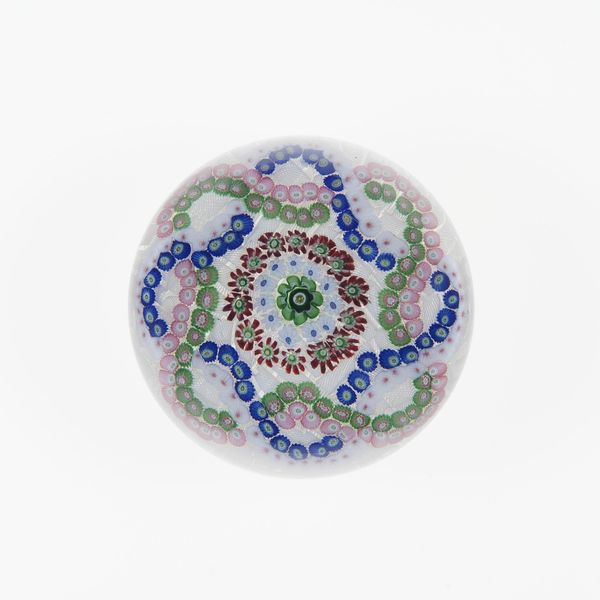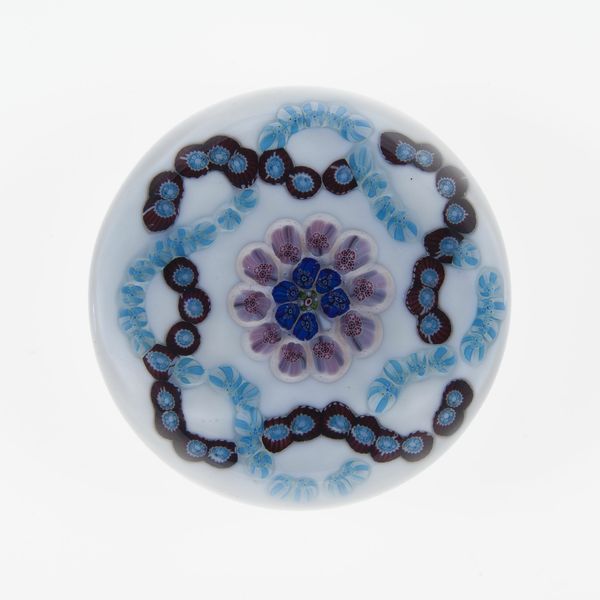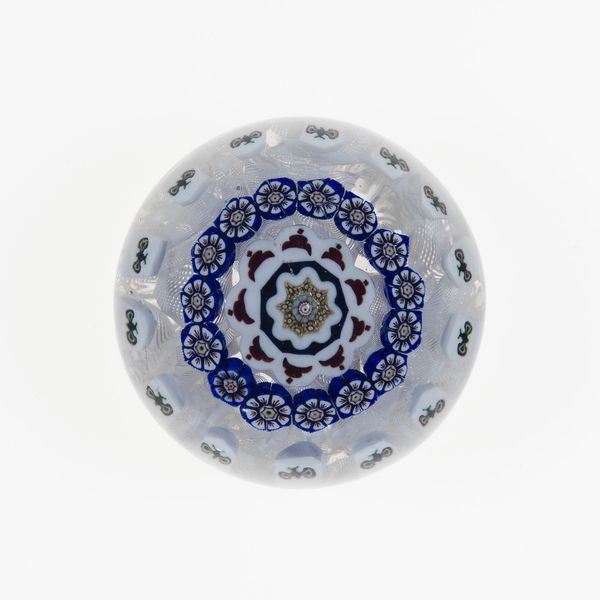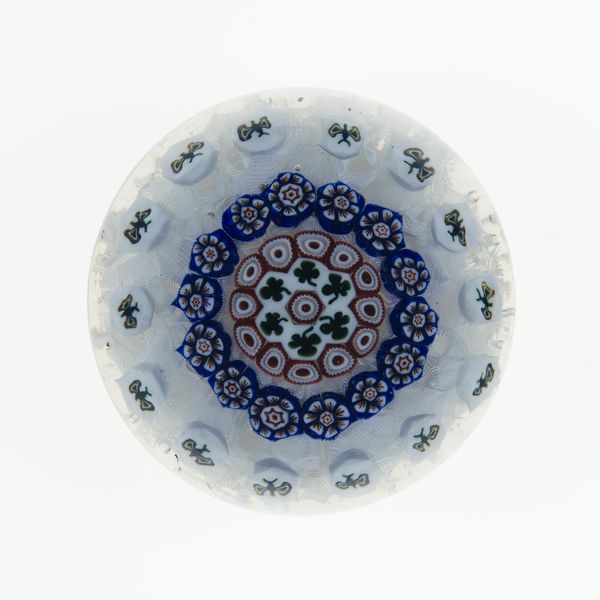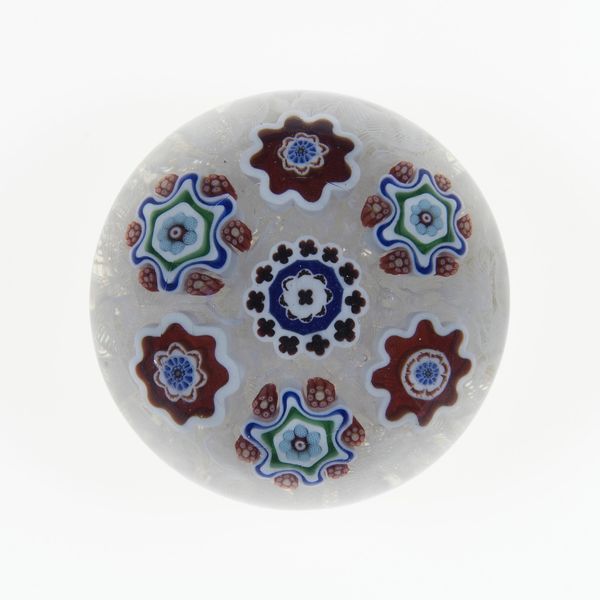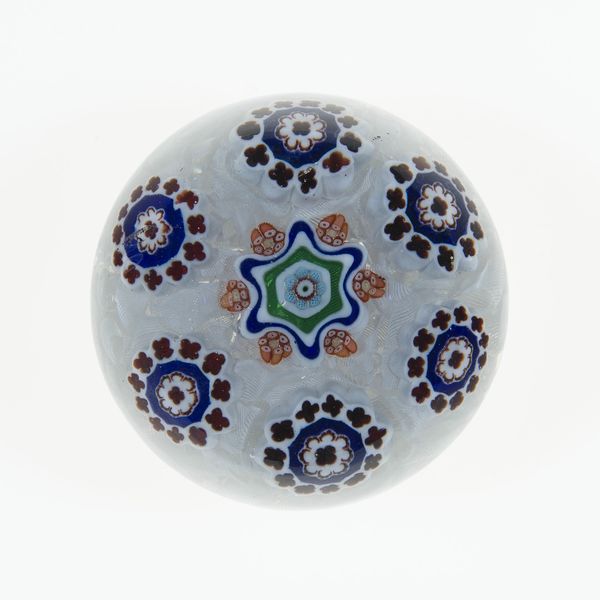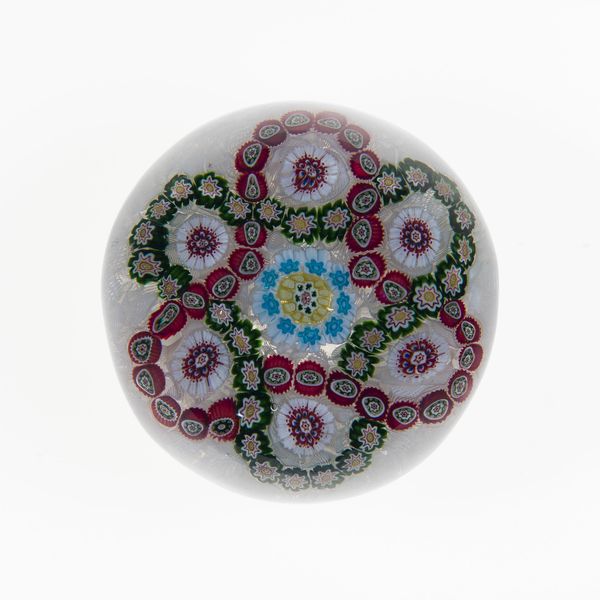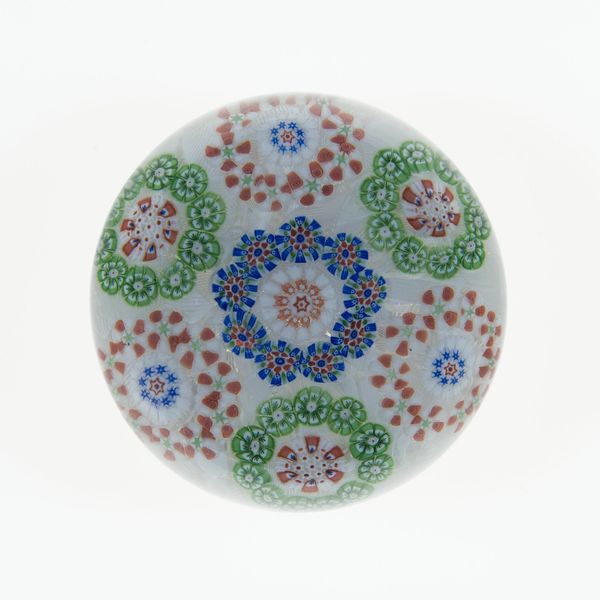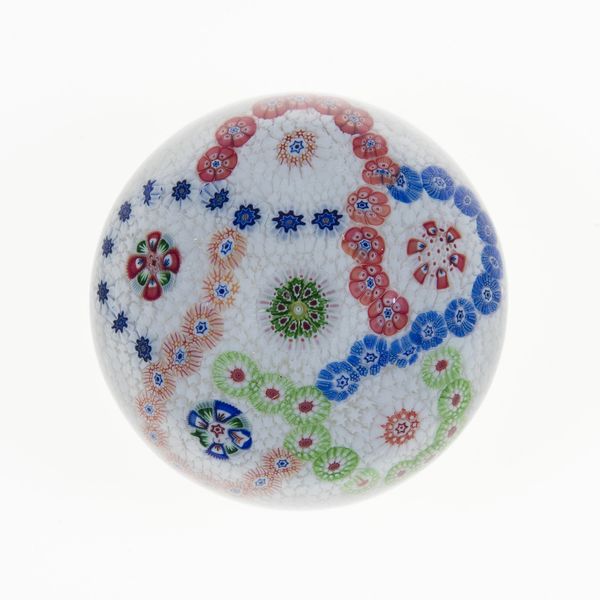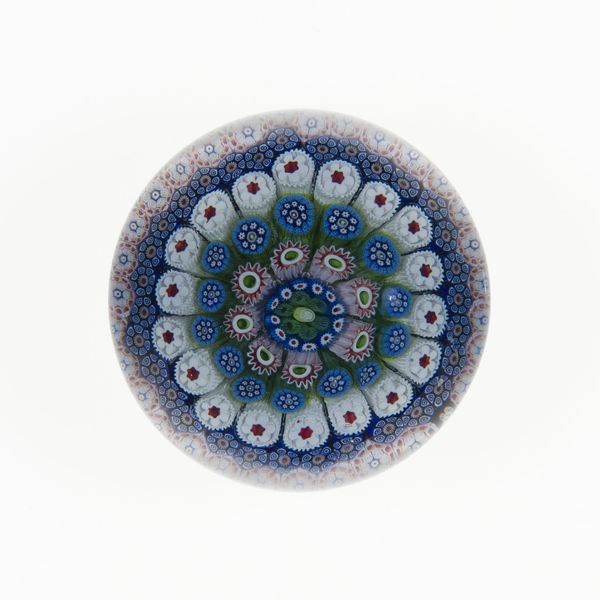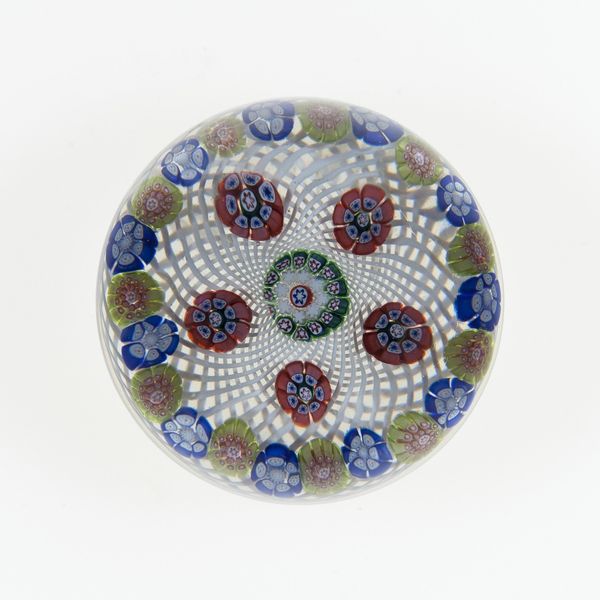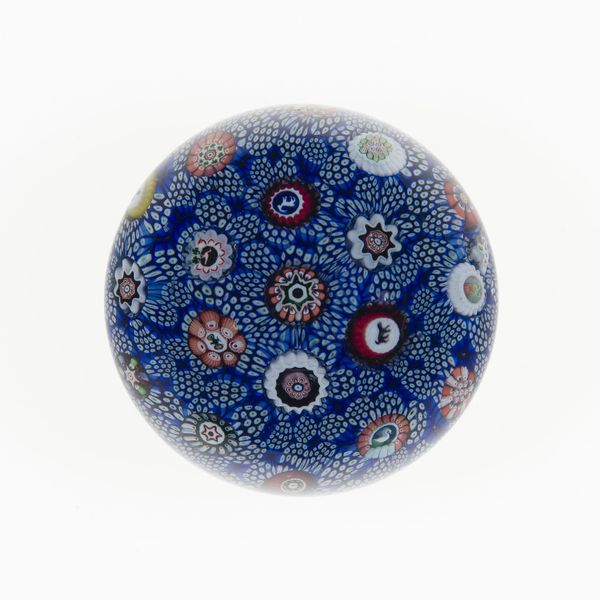
paper, glass
#
paper
#
glass
#
white focal point
#
decorative-art
Dimensions: Diam. 7.5 cm (3 in.)
Copyright: Public Domain
Curator: Here we have a stunning example of decorative art from the mid-19th century. This "Paperweight" crafted by Baccarat Glassworks around 1845 to 1860. It's currently part of the collection at The Art Institute of Chicago. Editor: Well, the immediate impression is quite striking. It’s contained beauty—a small universe of color and intricate form. The composition is incredibly balanced; the dome shape contains a mesmerizing pattern within the glass. Curator: Indeed. These paperweights became popular luxury items during the Industrial Revolution. Glassmaking techniques were evolving rapidly, and companies like Baccarat were experimenting with new ways to showcase their skills and create desirable objects for a burgeoning middle class. This piece is fascinating when we consider its process: How the glass workers precisely manipulated molten materials, layering and shaping it to embed these patterns and details, what conditions did the artisans work under in that glass factory and for what wage? Editor: Precisely, those encased florets capture an entire Victorian aesthetic within a handheld form, with complex layers, intricate details. See how it utilizes symmetry and color contrast to draw the eye into the object? It’s pure formal delight. Curator: Beyond mere aesthetics, consider the materials themselves—the quality of the glass, the pigments used to create these vibrant colors. It speaks to trade routes and material access. Also, the function. The irony of this decorative object intended to ‘hold down paper’ during that period seems worth noting too, a commentary on industry and progress itself, holding things back. Editor: You are right. Though beyond utility, for me it offers something akin to meditative peace through its perfectly symmetrical layout of contained forms and vibrant colors—especially the primary ones. Its flawless, almost divine symmetry provides an appealing optical treat. Curator: And yet, consider its status: mass-produced, yet still presented as high art. An attempt, I think, to reconcile machine-made production with established craft traditions. Editor: I see what you mean. What an unexpected and enlightening journey exploring the context of materiality and making through pure visual analysis, really opening a new window into seeing how glass is produced as medium and object. Thank you for this experience. Curator: Likewise! Understanding these tensions gives it even more significance. Thinking about the artwork production itself lets us interpret the artwork better in different perspective.
Comments
No comments
Be the first to comment and join the conversation on the ultimate creative platform.
